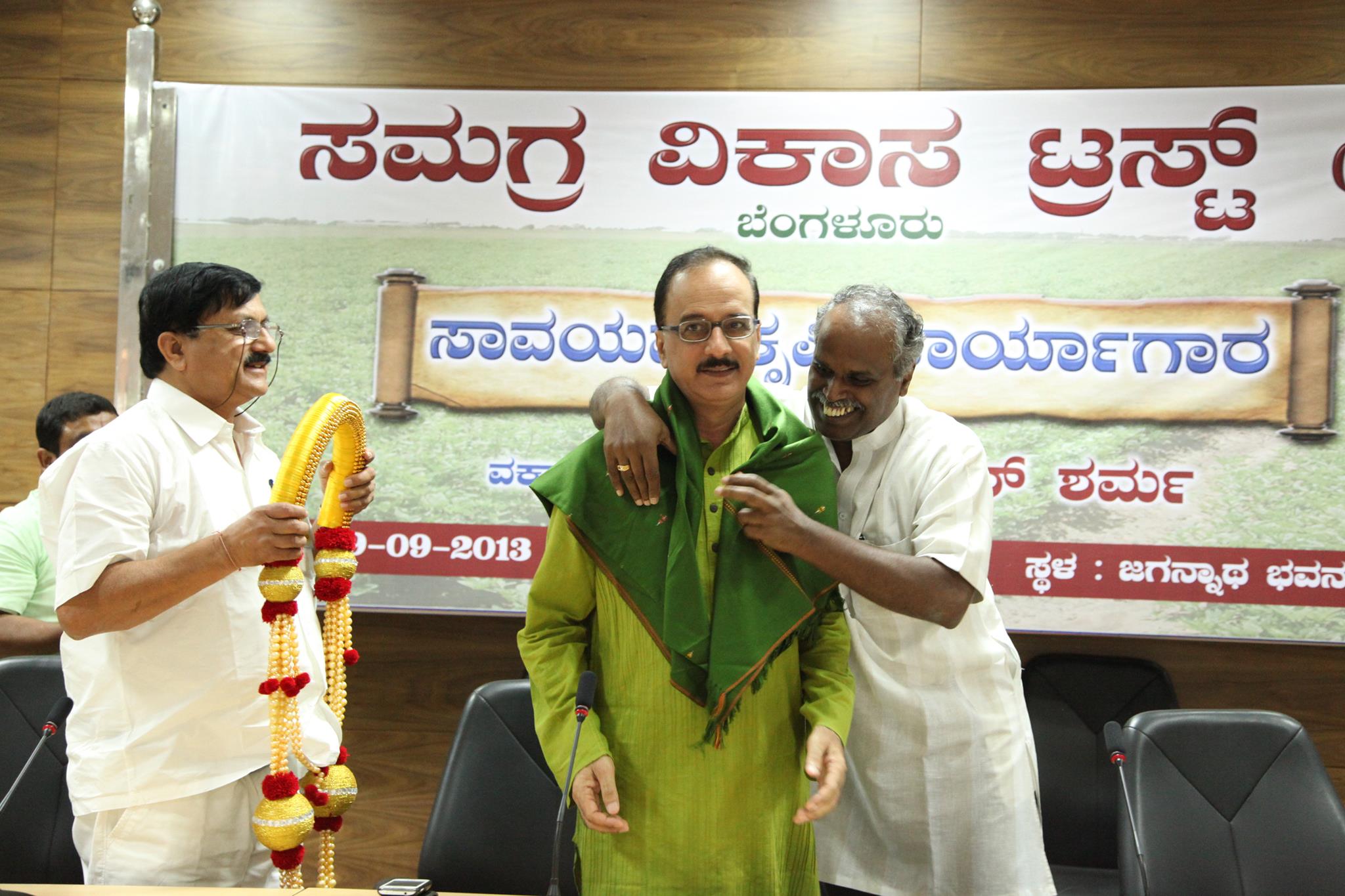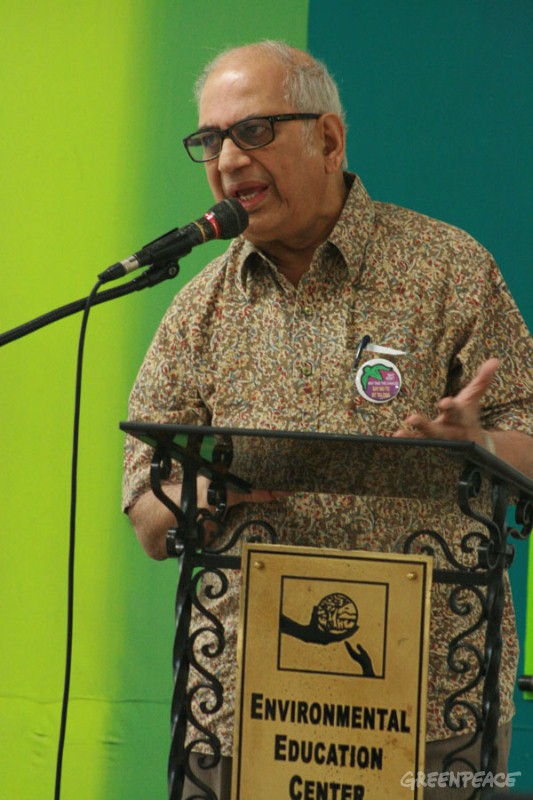It is always a pleasure and enlightening, to speak with good people. There are those that have an unbiased knowledge and analytical prowess. These abilities help them to peer through the smoke and mirror of industry spin and the cobwebs created by science, pseudo-science and voodoo science. Looking through all that, some can still emerge with clear thinking that cuts to the bone of an issue without circling around in the periphery. It is even better when such a person is not afraid to call a spade a spade, and do not sanitize a topic to the extent that it loses its texture and depth, to become a politically correct blend of bland gray that is both confusing and misleading, to the casual public.
Devinder Sharma is among those few. And it is a privilege to speak with him.
I called Devinder the other day to ask about Golden Rice. I have spoken with Debal Deb once about it, and created a podcast and a video, which one can find on my blog (www.tonu.org). I had checked with others too on the issue. But lately, the subject has resurfaced partly due to the famous televised debate between Canadian school girl and young anti-GMO crusader Rachel Parent and Kevin O’Leary where she blew away the industry shills, where the issue of Golden Rice was touched upon by Kevin, using an emotional pitch that poor kids in Asia are going blind and dying due to vitamin deficiency, which this Golden Rice will solve etc. This sentimental pitch is the worst kind of emotional blackmail that the media savvy people try to use to befuddle the listeners. But Rachel did not fall for it and cut him short stating that Golden rice does not even work, so lets stop talking about it.
The issue is of course a lot deeper than that, and encompasses the whole gamut of malnutrition and hunger on a global scale, and if that is because there is insufficient food, or there are too many middlemen making a buck and ensuring food prices remain high, even going waste if it has to, so the middlemen can make a profit, which the poor starve because they cannot afford the artificially jacked up high cost of food.
It is ironic that India has stockpiles of excess cereals, and exports large quantities of it, while there are more hungry children in India than likely in any other country. The reason for this is – some folks make money through the export, and it increases GDP and stock market values of nations and corporations. This helps investors with spare cash get richer. And if in the bargain there are millions of people starve – then why not use that as a tool to gain further access into the market, so some of the middle men can make even more money?
Food as a commodity is subjected to the same calculations that go beyond creation of a smart phone or an automobile – how to make more money out of it. These commodities are not designed to solve world hunger, or planet ecology, and national economy, or food security. These are created to make corporations and their stock holders rich. Period.
Food needs to be de-commoditized. Agriculture universities and colleges need to be funded by the public and not by biotech industries. It is better for the public taxes to be spent to safeguard public interest, than to hand over the stewardship of public policy making into the hands of corporations that created half the problems of the world to start with.
Like Einstein had said – the kind of logic that became the cause for subsequent problems, cannot be used to solve those problems. New logic and a different mindset is needed here.
Lately some documents on Golden Rice is being circulated in Canada for distribution among the sceptics of GMO. But I find the critic to be lukewarm and bypasses most of the serious issues behind it – including the exploitative philosophy behind the very creation of transgenic foods including Golden Rice. Even more importantly, Canadians, I feel, are in dire need to save themselves first from the bad-food epidemic that is sweeping across the nation, instead of pondering difficult issues of the third world and what Golden Rice can or cannot do.
The statistics of obesity, dramatically rising percentage of overweight people, of people with rising levels of various hitherto less known ailments and autism – should be life and death issues for Canadians. Let them concentrate on their own pathetic situation and leave the third world alone to solve their problems. Without intentional and unintentional western meddling, the third world can and will likely solve their own problems without having to be enslaved to western corporate interests.
Anyhow, Devinder Sharma provides another fresh outlook on the issue of Golden Rice. Important issues here might be :
- How western media is used to present muddied and misguiding news about technological breakthrough in agriculture. One good example is the case with DDT which drew cover page rave reviews on the most famous western magazines, only to be banned across the planet a generation later, but not before it did irrecoverable damage to the planet.
- How Ingo Potrykus, the creator of Golden Rice, had a less than pleasant exchange with Devinder Sharma.
- How Ingo Otrykus was against independent verification of the value and utility of Golden Rice.
- The humbug of Pro-tato, Po-mato and all other kinds of similar absurdities.
- The famous case of agricultural development model pushed in India and exposed by Devinder Sharma and others, where nutritious human food grown in India was to be exported as cattle feed for the west, and cattle food grown in the west was to be imported into India for human consumption – all in the name of development and westernization.
- The food storages are full in India, and yet the poor do not have access to it. The issue of hunger is not related to quality or quantity of food. it is related to structural injustice where the food is out of reach of the poor due to distribution issues and profiteering. Biotech cannot solve that – in fact biotech products are designed to increase profiteering by the middle man.
- World Food summit followed up by the World Hunger Summit in Bonn around 2001, which Devinder attended, and how the conferences goal of abolishing half of world hunger by 2015 – was a joke and only helped muddying the issue of hunger – and displays part of the international dishonesty, in dealing with world hunger.
- Last year, the world produced enough food for 13 billion people, almost twice the current population and higher than the projected maximum world population (2060) before it starts coming down. So, the world has far in excess of what food it needs for its people – now and generations into the future.
- The hunger is a product of the systems put in place large through western efforts into the pricing, subsidy, trade negotiations and arm twisting in creating a warped distribution and trade infrastructure. There is a whole lot of bogus talk and untruths going around in the name of helping the poor.
The podcast can be listened to by clicking on the play button at the bottom, or finding it on iTunes by searching my name among the podcasts.
The original talk with Devinder covered more than an hour. Here the topic of Golden Rice is covered in 30 minutes.
I shall be glad to hear your comments on it. You may respond back to tony.mitra@gmail.com

